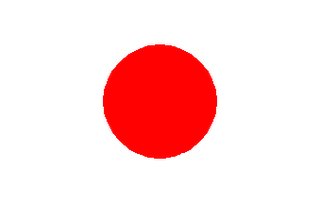Japan Growth is good news
 Japan's GDP grew at a surprisingly strong annualised rate of 5.5% in the fourth quarter of 2005. It looks like the economy may finally be leaving ten years of stagnation behind.
Japan's GDP grew at a surprisingly strong annualised rate of 5.5% in the fourth quarter of 2005. It looks like the economy may finally be leaving ten years of stagnation behind.Japan currently possesses one of the most advanced communication networks in the world.
Telephones - main lines in use: 60.3 million (1997)
Telephones - mobile cellular: 88.1 million (July 2004)
Telephone system: excellent domestic and international service according to CIA World Factbook domestic: All major city to city lines are now fiber-optic and replacing copper wires to the home has started. Several IP phone companies have also begun their services providing low or fixed price phone services.
International: satellite earth stations - 5 Intelsat (4 Pacific Ocean and 1 Indian Ocean), 1 Intersputnik (Indian Ocean region), and 1 Inmarsat (Pacific and Indian Ocean regions); submerged cables to Mainland China, Philippines, Russia, and US (via Guam)
Radio and Television
Radio broadcast stations: AM 190, FM 88, shortwave 24 (1999)
Radios: 120.5 million (1997)
Television broadcast stations: 7,108 (plus 441 repeaters; note - in addition, US Forces are served by 3 TV stations and 2 TV cable services) (1999)
Televisions: 86.5 million (1997)
Internet Service
Internet Service Providers (ISPs): 357 (1999)
Internet Service Providers via Cable Network: 334 (June 2004)
Number of Portable Phone Users with the Internet Access: 71,044,000 (June 2004)
Number of Broadband Users by Access (April 2005)
Number of the xDSL Users: 13,675,840 lines
Number of the FTTH Users: 2,852,205 lines
Number of the CATV Service Users: 2,959,712 lines
Number of Broadband Users by Access (June 2004)
Number of the xDSL Users: 12,068,718 lines
Number of the FTTH Users: 1,417,483 lines
Number of the CATV Service Users: 2,702,000 lines
Number of the Dial-up Users: 17,730,000 lines
Number of Broadband Users by Access (June 2002)
Number of the xDSL Users: 3,300,926 lines
Number of the FTTH Users: 84,903 lines
Number of the CATV Service Users: 1852000 lines
Number of the Dial-up Users: 20,390,000 lines
Country code (Top-level domain): JP
History
The broadcast industry has been dominated by the Japan Broadcasting Corporation (Nippon Hoso Kyokai—NHK) since its founding in 1925.
In the postwar period, NHK's budget and operations were under the purview of the Ministry of Posts and Telecommunications, the Broadcasting Law of 1950.
In 1992 Japan also had more than 12,000 televisions stations, and the country had more than 350 radio stations, 300 AM radio stations and 58 FM. Broadcasting innovations in the 1980s included sound multiplex (two-language or stereo) broadcasting, satellite broadcasting, and in 1985 the University of the Air and teletext services were inaugurated.
Japan has been the world leader in telecommunications in the 1980s, but this position that has been challenged by the United States' dot-com industry in the 1990s and the emerging tiger states in Asia. While the United States is leading in digital content, South Korea is leading in broadband access, India is leading in software, and Taiwan is leading in research and development.
0 Comments:
Post a Comment
<< Home